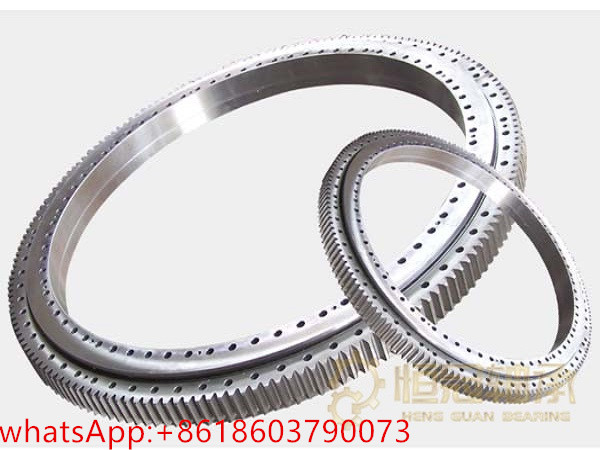Causes and treatment methods of overheating of slewing bearing
The overheating phenomenon of the slewing bearing during operation is one of the common faults of the bearing. Once the overheating phenomenon is found, it needs to be stopped in time for investigation and treatment. Improper handling will reduce the efficiency of mechanical equipment, and may cause serious damage to the bearing, increase unnecessary capital investment, and delay the construction period, which is not worth the loss. So what are the reasons for the overheating of the slewing bearing? How to deal with it? Next, the editor of Hengguan will give you a detailed introduction.
1. The cause of overheating
1. Poor lubrication
Good lubrication is a necessary condition to ensure the normal operation of the bearing. If the bearing grease is insufficient or deteriorated, it will increase the friction and wear of the bearing, causing the bearing to overheat.
2. Improper installation
When the bearing is installed, it is required that the center line of the shaft and the bearing hole need to be coincident. If the installation is not correct, the bearing will have deflection, and torque will be generated when rotating, causing the bearing to overheat, wear, vibrate, and increase noise.
3. Inspection and replacement are not timely
The bearings in operation should be checked in time. If serious fatigue spalling, oxidation rust, pits, cracks, etc. are found, new bearings should be replaced in time, otherwise the bearings will be overheated, abnormal noise or even damage the mechanical equipment.
4. Poor bearing quality or improper selection
The slewing bearing generally works for a long time under strong stress. The accuracy, life and reliability of the main engine largely depend on the bearing. If the bearing itself is of poor quality or improperly selected at the time of purchase, its limit speed and load capacity will not match the equipment. , may cause overheating.
Slewing bearing
2. Processing method
1. Purchase bearings with good quality and matching models
When purchasing bearings, the quality must be strictly controlled, and factors such as the nature, size, temperature conditions, and rotation of the inner and outer rings of the bearing load should be comprehensively considered according to the equipment requirements to ensure that the model matches.
2. Install the bearing according to the operating procedures
When the bearing is installed, the coordination between the inner diameter of the bearing and the shaft, the outer diameter and the outer casing is very important. In addition, the center line of the shaft and the bearing hole needs to be coincident to prevent the bearing from overheating, vibration, abnormal noise, etc. caused by wear caused by improper installation.
3. Regularly check and replenish grease
Bearings should be regularly inspected for grease. If the lubrication is insufficient, it should be replenished in time. If the grease deteriorates, it should be replaced in time. Different types of grease cannot be mixed.
4. Timely check the running condition of the bearing
Timely check whether the bearing is bitten and worn, check whether there are cracks, rust, pits and other defects inside and outside the bearing, measure whether the bearing clearance exceeds the standard, and repair or replace the new bearing in time if there is an abnormality.


